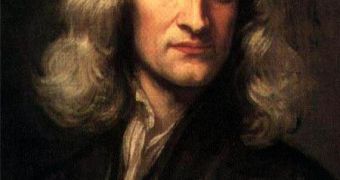The Royal Society in the United Kingdom announces that it has finally completed a very delicate task, namely that of converting a very old and fragile manuscript into an electronic format. The work in question is a book authored by scholar William Stukeley, who wrote in 1752 the biography of one of the greatest scientists the world has ever known. The Memoirs of Sir Isaac Newton's Life describes in detail one of the major discoveries in physics, the force of gravity, as spoken by the man himself. The original tale of the falling apple is also included, and the Royal Society has finally managed to post all of these contents online, in the form of an electronic book, the BBC News reports.
“The story of Newton and the apple […] had gradually become debunked over the years. It is now clear, it is based on a conversation between Newton and Stukeley. We needn't believe that the apple hit his head, but sitting in the orchard and seeing the apple fall triggered that work. It was a chance event that got him engaged with something he might have otherwise have shelved,” Oxford University Trinity College Emeritus Professor of the History of Art, Martin Kemp, said of the famed physicist. He added that being able to see the work in its electronic format was of incredible importance to historians.
The thing about the new book is that anyone with access to the Internet can see it. In addition, it features high-resolution images, which people browsing this website can turn for themselves. The original text is accompanied by some captions added by experts today, but Stukeley's old handwriting can be made out and understood quite clearly. Anyone with enough patience can decipher the texts for themselves, and this feat alone is remarkable, historians say. The manuscript helps shed some new light on one of the most interesting figures to have ever lived.
Newton was born on January 4, 1643, and died on March 31, 1727. During his life, he took an active interest in a wide field of areas, ranging from mathematics and physics to alchemy and theology. His crowning achievement was published in 1687, and was called Philosophiae Naturalis Principia Mathematica. The book is widely considered to be one of the most important publications ever to appear in the field of science, as it finally demonstrated that the heliocentric model was real. The scientist also tied Kepler's laws of planetary motion to his theory of gravitation, setting the basis for much of what is now known as Newtonian physics.

 14 DAY TRIAL //
14 DAY TRIAL //